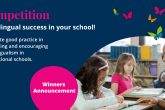
Oliver Omotto shares his reflections and best practice in developing meta-cognitive practices and strategies to promote higher-order thinking in the classroom.
What is metacognition?
It is very important that we empower our learners with strategies that will enable them to reflect on their own learning. Mark Twain said “College is a place where a professor’s lecture notes go straight to the students’ lecture notes, without passing through the brains of either.” John Dewey takes this argument a step further by saying: “We do not learn from experience … we learn from reflecting on experience.” Kolb (1984) cycle of learning encourages teachers to plan for several opportunities for learners to reflect and review what they are learning in every lesson.
The aim is to take the learners into new experiences by using reflective practice as a tool to gain conclusions and ideas from those experiences. Metacognition therefore describes the processes involved when learners plan, monitor, evaluate and make changes to their own learning behaviours. Students can only decide to make changes to the strategies they are using if they are not working by reflecting on them. As students work through the task, it will help them to ask themselves: ‘Is the strategy that I am using working?’ ‘Do I need to try something different?’
What are the benefits of metacognition?
Meta-cognitive practices helps students to become independent learners by monitoring their own progress and taking control of their learning as they read, write and solve problems in the classroom. Learners who use meta-cognitive strategies are likely to be able to achieve more. A meta-cognitive approach typically involves students applying meta-cognitive strategies to respond to clear and explicit learning goals which have either been set by the teacher or identified by the student themselves. The student uses their meta-cognitive strategies to plan, monitor and evaluate their own progress towards achieving the learning goals.
In order to apply a meta-cognitive approach, learners need access to:
Clear learning goals – with clear learning goals, students can plan strategies that will help them to achieve the goals and will also monitor their progress towards achieving these goals. Teachers are also encouraged to set lesson objectives and challenging cognitive tasks that demand higher-order thinking on the Blooms Taxonomy in order to stretch the learners. Some of these tasks can also be given to students in form of prep and extension work.
Modelling of the strategy – a teacher modelling a meta-cognitive strategy is a useful way of introducing a new strategy to learners. A step-by-step demonstration of the strategy gives learners a clearer understanding of what the strategy involves and how to apply it in their lessons.
Meta-cognitive strategies
- Think-Pair-Share – Think Pair Share involves posing a question to students, asking them to take a few minutes of thinking time and then turning to a nearby student to share their thoughts.
- Quizzes – re-reading alone does not help. Class continues with quizzes at start of lesson, after lesson and then a review quiz prior to chapter tests. Most students said the quizzes reduced their anxiety over exams and majority said they felt it increased their learning.
- Generate-it – students are asked to write using your own words. What is the question? What is the missing link? Summarise this in symbols, Complete the puzzle/ crossword.Create a makaton/ sign, cartoon, body posture for e.g Hitler, a literary character, a concept.
- Mind-mapping – this helps students to think through the key concepts, ideas and activities in the lesson. They put question marks on what they can not remember and they are given time to research and revise from their notes. This can be very helpful when planning response to an essay question.
- Claim-Evidence-Reasoning Form – this learning resource has been used mostly for science subjects. Student makes a claim (statement about the results of an investigation), followed by evidence (scientific data to support that claim) and finally they make a conclusion explaining their reasoning (ties together the claim and the evidence).
- De-Bono’s Thinking Hats – students are introduced to six Thinking Hats approach to improve their decision making, by looking at the decision from a range of different perspectives.
- Mnemonics – many teachers will be familiar with the use of mnemonics to help learners remember information that might otherwise be difficult to recall.
- Thinking journals – keeping a thinking journal can be a highly effective way for learners to develop their ability to plan, monitor and self-evaluate.
- Meta-cognitive talk – meta-cognitive talk involves a person saying out loud what they are thinking while they are carrying out a task.
- Exam wrappers – these are worksheets containing reflective questions that help learners to review their performance in a test or exam. Exam wrappers can be given to learners both before and after they receive the results of the test and feedback.
- KWL chart – KWL stands for: What do I Know? What do I Want to know? What did I Learn? The purpose of the chart is to help learners to organise information before during and after a lesson or unit of learning. A KWL chart will help you to engage your learners in a new topic, activate their prior knowledge and support them in monitoring their learning.
Research and further reading
Metacognition: Strategies to promoting higher-order thinking at Greensteds International School
Metacognition Dylan Wiliam Learning and teaching
Visible Thinking – Think Pair Share: A routine for active reasoning and explanation
GSI Berkeley – Social Constructivism
About the author
Oliver Omotto is Senior Teacher and Head of Faculty at Greensteds International School in Nakuru, Kenya. His teaching experience spans over a duration of 12 years. He works as Examiner for A Level Media Studies and also holds international accreditation as a professional development leader alongside another Pearson OSCA accreditation as Level 3 BTEC Lead Verifier for Creative Media Production. He blogs on a wide range of educational issues.
